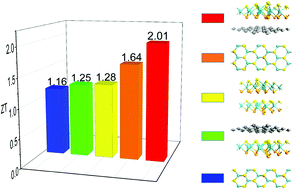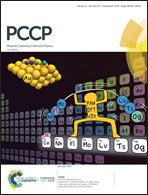Enhanced thermoelectric performance of monolayer MoSSe, bilayer MoSSe and graphene/MoSSe heterogeneous nanoribbons
Abstract
Graphene has many superlative thermal, electrical and mechanical properties. However, the thermoelectric performance of graphene is limited by its high thermal conductivity and small Seebeck coefficient. To address this problem, monolayer and bilayer MoSSe nanoribbons together with graphene/MoSSe heterostructures have been investigated in this work. The electron and phonon transport, and the thermoelectric properties of the monolayer and bilayer MoSSe nanoribbons, together with the graphene/MoSSe heterostructures, have been analyzed by first-principles methods in conjunction with non-equilibrium Green's function and the Landauer equation. The results indicate that figure of merit (ZT) values of 2.01 and 1.64 can be achieved for graphene/SeMoS stacked nanoribbons and symmetric armchair MoSSe nanoribbons respectively at 300 K, which are much higher than the ZT value of prime graphene (ZT ∼ 0.05). The maximum ZT values of these structures increase at T < 350 K, while the maximum ZT decreases at high temperatures (T > 350 K). However, the maximum ZT values of the symmetric armchair MoSSe nanoribbons show an increase with temperatures up to 550 K. From our analysis, phonon thermal conductivity and temperature are key factors determining the ZT values in MoSSe nanoribbons. The significantly enhanced ZT values make graphene/SeMoS stacking nanoribbons and symmetric armchair MoSSe nanoribbons promising candidates for application in thermoelectric devices.



 Please wait while we load your content...
Please wait while we load your content...